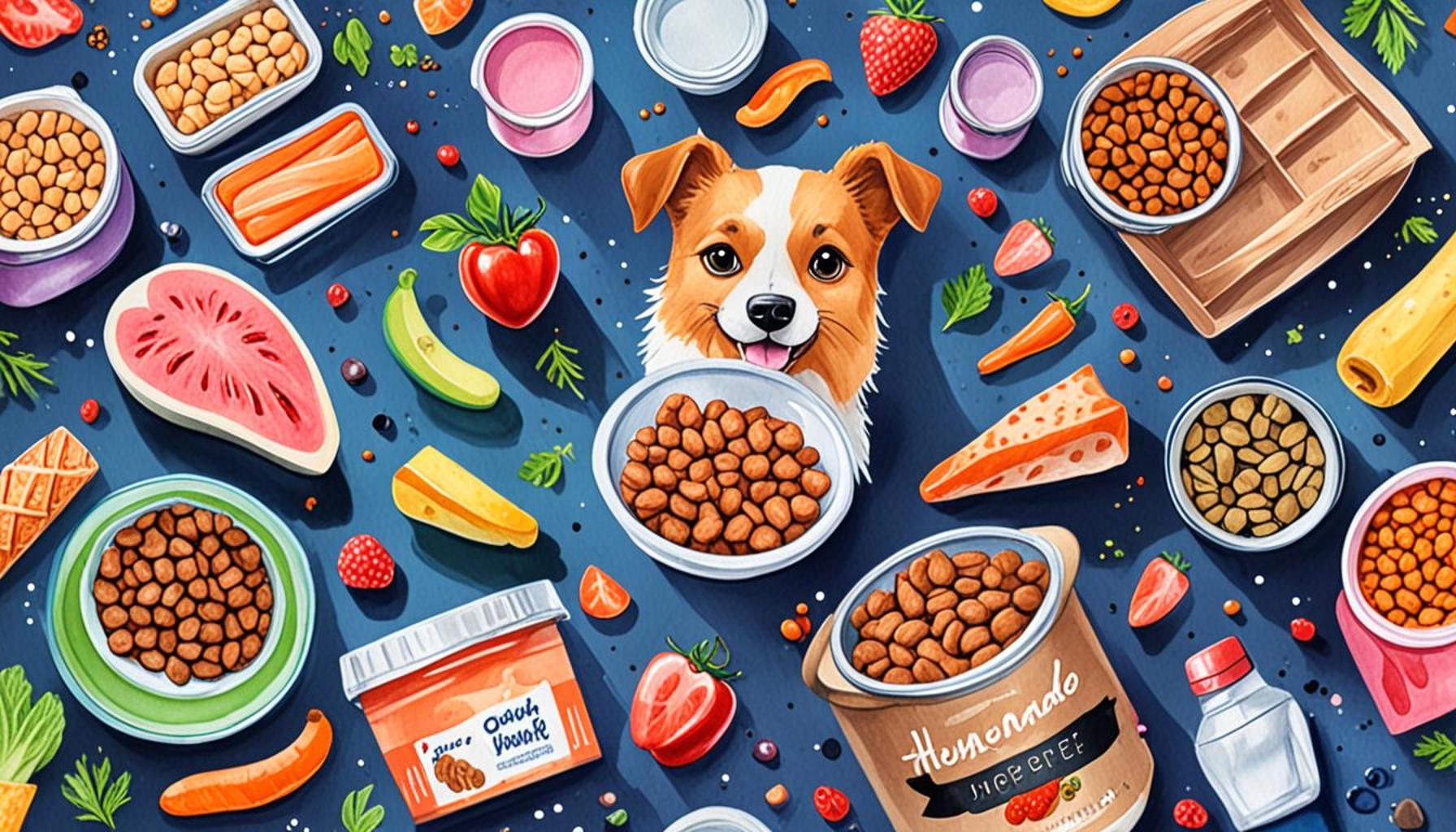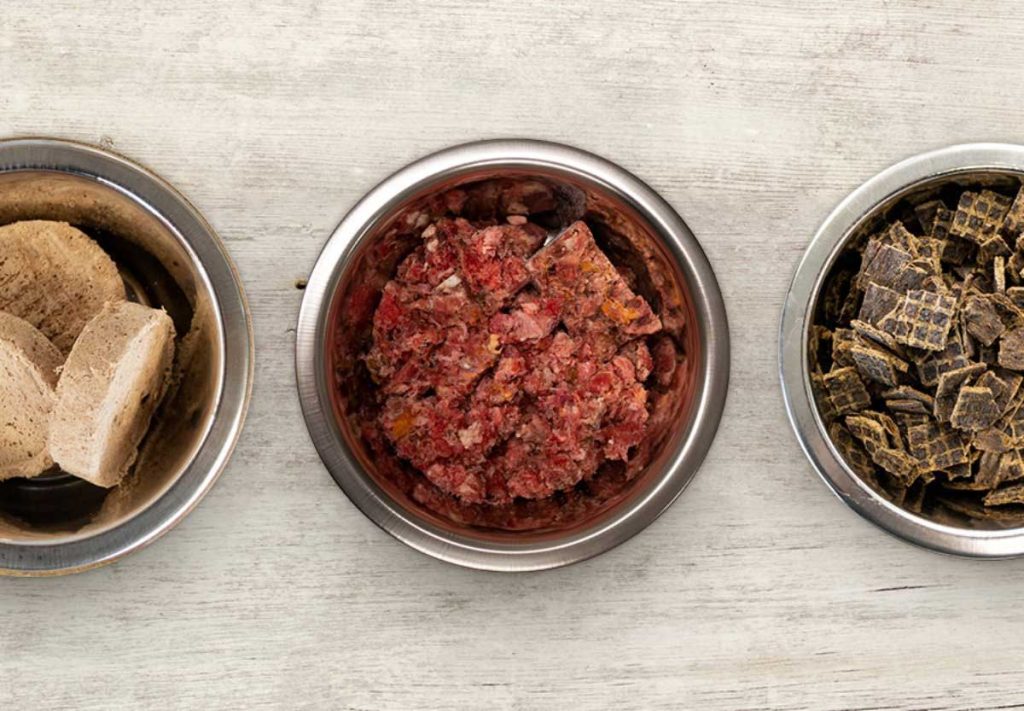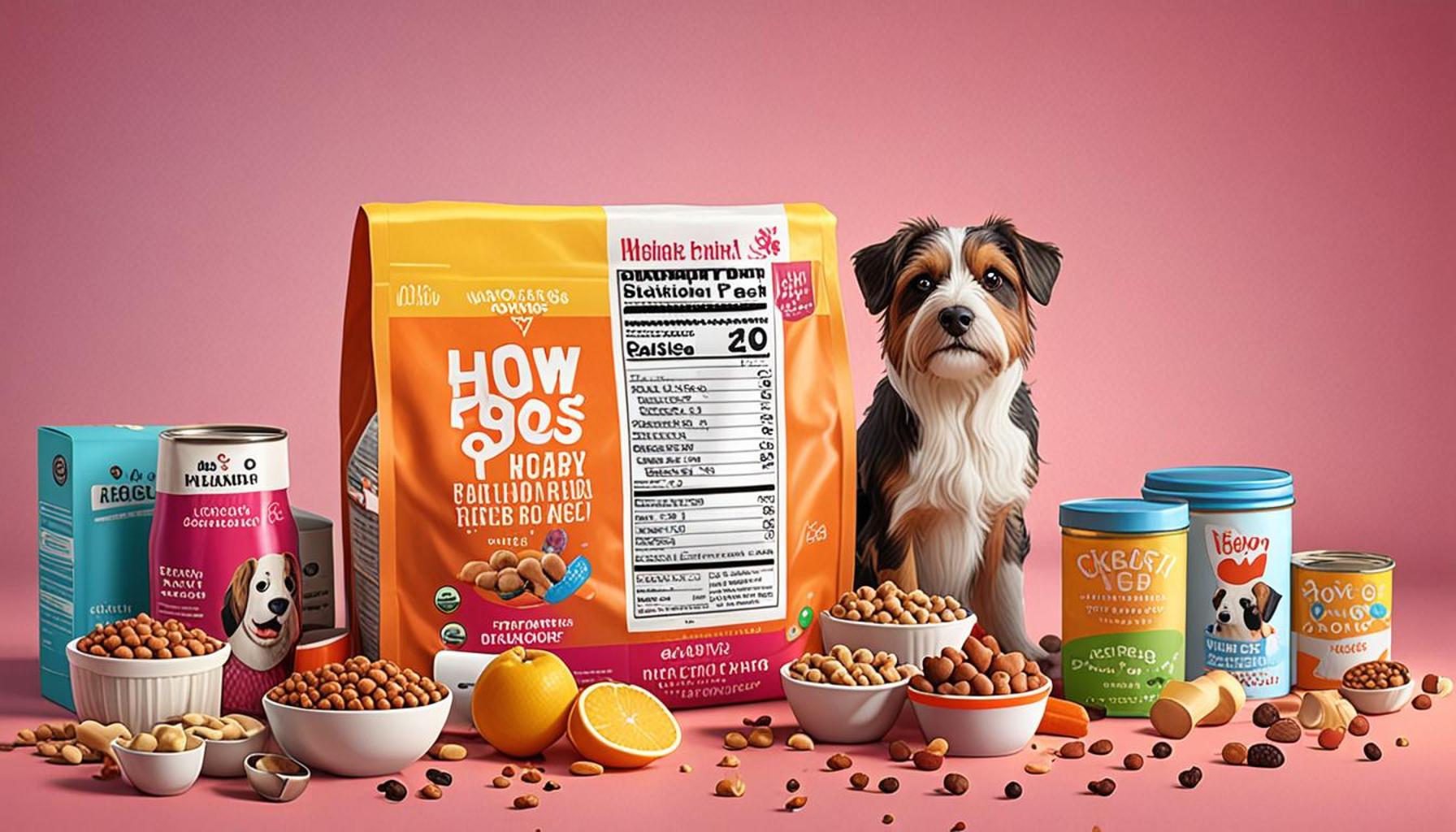Homemade Pet Food: Pros and Cons for Your Dog’s Nutrition

In recent years, the debate over homemade pet food has gained momentum among dog owners who seek the best for their furry companions. With an increasing number of pets suffering from allergies, obesity, and other health issues, many are turning to do-it-yourself meals. However, this trend raises important questions about the nutritional balance and safety of pet food made at home.
Understanding the Appeal
There are several reasons dog owners consider preparing food themselves. One primary motivation is the control over ingredients. Knowing exactly what goes into your dog’s meals can help prevent harmful additives that often lurk in commercial pet foods, such as artificial preservatives, colors, and low-quality fillers. Many pet parents are increasingly aware of the health implications of these additives, especially as they become familiar with recent studies highlighting their potential side effects.
Customization is another compelling reason. Each dog is unique, with distinct dietary needs that may vary based on factors like age, breed, size, and health conditions. For example, a dog with grain allergies may require a strictly grain-free diet, which can be easily accommodated through homemade recipes. This level of customization can also extend to addressing specific sensitivities, such as lactose intolerance or certain protein allergies, allowing owners to curate meals that suit their beloved pet’s individual requirements.
Moreover, preparing meals at home often emphasizes quality assurance. Using fresh, wholesome ingredients—like organic vegetables, lean meats, and healthy fats—can significantly improve the overall health of your pet. Some owners report observing improvements in their dog’s energy levels, coat condition, and even digestion after switching to homemade meals.
Considerations to Weigh
Despite the benefits, there are significant downsides to be mindful of. One of the most pressing concerns is nutritional balance. It can be challenging to ensure homemade meals provide all necessary vitamins and minerals. For instance, if a homemade diet lacks essential fatty acids like Omega-3 or key nutrients like calcium, it could lead to long-term health issues, necessitating careful research or veterinary guidance.

Additionally, the process of preparing pet food from scratch can be time-consuming. Preparing balanced meals regularly requires meal planning and may eat into the busy schedules of dog owners. This factor often leads to convenience-driven choices, which might compromise the intention behind homemade meals.
Furthermore, there are health risks associated with improper handling of ingredients. Just as in human food preparation, poor hygiene and cooking practices can lead to foodborne illnesses, which can be detrimental to pets. Ingredients such as raw eggs or certain meats, if not handled properly, can also increase these risks. Therefore, education on safe cooking and handling practices is crucial for dog owners looking to venture into the realm of homemade meals.
As you explore the world of homemade pet food, it’s essential to weigh these pros and cons carefully. This article will delve deeper into the nutritional impacts, potential risks, and practical tips for those considering making the switch for their dogs. Understanding the complexities involved in homemade pet food preparation can lead to better decision-making and improved health for your cherished companions.
LEARN MORE: Click here to discover essential tips for pet adoption
The Nutrition Dilemma
When it comes to homemade pet food, the challenge of achieving nutritional completeness is one of the foremost concerns that dog owners face. Unlike commercial dog foods, which are formulated to meet the dietary needs of your pet, preparing meals at home requires a keen understanding of canine nutrition. There is a delicate balance that must be maintained; dogs require a mix of protein, carbohydrates, fats, vitamins, and minerals tailored to their specific needs. Failure to achieve this balance could lead to nutrient deficiencies or excesses, which can be harmful in the long run.
Veterinarians typically recommend a combination of the following essential nutrients when crafting a homemade dog diet:
- Proteins: Dogs need high-quality protein sources like chicken, turkey, fish, or beef, which are crucial for muscle development and overall health.
- Carbohydrates: While not necessary for energy, carbohydrates such as brown rice and sweet potatoes can provide additional fiber and promote digestive health.
- Fats: Healthy fats, like fish oil or flaxseed oil, are essential for skin and coat health as well as brain function.
- Vitamins & Minerals: Micronutrients from fruits and vegetables, or supplements specifically designed for canine health, are necessary to fill the gaps in homemade diets.
Research indicates that pet owners who choose homemade meals often do so out of a desire to ensure that their dogs receive high-quality ingredients void of unhealthy additives. However, it’s important to recognize that achieving this nutritional equilibrium demands diligence and effort.
Health Risks and Safety Measures
Addressing the potential health risks associated with homemade dog food preparation is crucial. Foodborne illnesses are a significant concern, particularly when using raw ingredients. Just as humans risk exposure to bacteria such as Salmonella or E. coli when handling raw meats, dogs are equally vulnerable. Therefore, adopting safe food handling practices is non-negotiable. Here are some tips for reducing risks:
- Wash your hands: Always wash your hands before and after preparing your dog’s meals.
- Clean surfaces: Ensure that kitchen surfaces, utensils, and feeding bowls are thoroughly cleaned and sanitized.
- Store food properly: Keep ingredients and prepared meals stored at appropriate temperatures to limit bacterial growth.
Moreover, careful consideration of ingredient sourcing is essential. Incorporating human-grade ingredients from reputable sources minimizes the risk of contaminants, which can plague lower-quality commercial dog foods. However, not all food-safe items for human consumption are safe for dogs. For instance, some fruits and vegetables, such as grapes and onions, can be toxic to dogs and should be avoided.
In summary, while creating homemade pet food can yield numerous benefits in terms of ingredient quality and dietary customization, dog owners must remain vigilant about ensuring balanced nutrition and food safety. For those willing to invest the time and effort into proper research and preparation, homemade meals could lead to improved health and vitality for their canine companions.
Exploring the Advantages of Homemade Pet Food
As pet owners increasingly turn to homemade pet food, it’s important to understand the potential benefits that this approach can bring to your dog’s nutrition. The ability to control ingredients is one of the most significant advantages, allowing you to tailor meals specifically to your dog’s dietary needs. This level of customization can help with food allergies or sensitivities that commercial dog food may not address.
Additionally, homemade meals can often be fresher than pre-packaged options, offering higher nutritional value. While processing can strip away essential nutrients, preparing food at home enables you to select high-quality ingredients. By knowing exactly what goes into each meal, you can ensure a balanced diet rich in vitamins, minerals, and proteins.
Quality just as crucially impacts a dog’s energy levels and overall health. Many pet owners report improvements in coat condition, digestion, and even behavior after switching to homemade diets. Furthermore, the bonding experience of cooking for your pet can enhance your relationship and instill a sense of care.
Where to Proceed with Caution
However, while the benefits are profound, there are critical considerations. It requires time, effort, and a solid understanding of canine nutrition to ensure that your dog gets all the necessary nutrients. Consulting with a veterinarian or a pet nutritionist before embarking on making homemade meals is highly recommended to avoid potential health risks.
| Category | Details |
|---|---|
| Customization | Ability to tailor food to specific dietary needs. |
| Ingredient Quality | Control over freshness and quality of ingredients. |
| Nutritional Benefits | Potential for improved health and vitality. |
| Cost | Possibly higher than pre-packaged dog food. |
These factors all come together in evaluating whether making homemade pet food is the right choice for you and your dog. The commitment to understanding proper proportions and ensuring a balanced diet may require dedication, but for many pet owners, the health benefits and enhanced companionship make it worthwhile.
DON’T MISS: Click here to learn why hydration matters
Weighing the Benefits Against the Drawbacks
As pet owners explore the world of homemade pet food, they often find themselves considering both the advantages and potential disadvantages of this dietary approach. Understanding these factors is crucial to making an informed decision about your dog’s nutrition.
One of the primary benefits of homemade pet food is the level of control it provides. Pet owners can tailor meals according to their dog’s specific dietary requirements, whether it be allergies, sensitivities, or specific health conditions. For instance, dogs suffering from food allergies may thrive on homemade diets that exclude allergens commonly found in commercial brands. Ingredients like quinoa and pumpkin, which are often overlooked in commercial diets, can serve as excellent nutrient sources while also being gentle on a dog’s digestive system.
Moreover, many dog owners report an increase in their pet’s energy levels and overall vitality after transitioning to homemade meals. Fresh ingredients, free from fillers and preservatives, contribute to improved nutrient absorption and better wellbeing. Dogs, much like humans, may respond positively to diets rich in real food, characterized by wholesome ingredients like lean meats and fresh vegetables. An example is the incorporation of antioxidant-rich fruits such as blueberries into their meals, promoting overall health and immune function.
However, the drawbacks of homemade pet food cannot be ignored. Beyond the intricate balancing act of nutrients, the time commitment required for meal preparation is considerable. Preparing food in advance, cooking proteins, chopping vegetables, and calculating correct portion sizes can consume significant time, which might not be feasible for all pet owners. Additionally, the financial aspect can be another hurdle; while some may perceive homemade solutions as cost-effective, high-quality ingredients may, in fact, accrue significant costs, particularly for premium meats or organic produce.
Another concern is the lack of empirical data supporting long-term health outcomes associated with homemade diets. Some veterinarians believe that without proper formulation, there can be an insufficient intake of specific vitamins and minerals that commercial foods are designed to provide. A study published in the Journal of the American Veterinary Medical Association indicates that many owners inadvertently create unbalanced diets through their homemade recipes. Pet owners should regularly consult with their veterinarian to monitor their pet’s health status while on a homemade diet.
As you delve into making homemade pet food, it is also vital to consider dietary diversity. Dogs benefit from eating various ingredients to prevent developing a diet based on a limited range of nutrients. This diversity supports better digestive health and reduces the risk of protein and oil intolerance that may arise from consuming the same set of components repetitively.
In conclusion, the journey of creating homemade pet food can be enriching, both for the owner and the dog. Yet, the promising potential for enhanced nutrition comes hand-in-hand with practical challenges that warrant careful consideration. Armed with knowledge, vigilance, and professional guidance, pet owners can navigate the homemade pet food landscape more effectively.
DISCOVER MORE: Click here to learn about how nutrition affects your pet’s mood
Final Thoughts on Homemade Pet Food
In summary, the decision to transition to homemade pet food is not one to be taken lightly. The journey offers a myriad of benefits, including greater ingredient control, tailored diets for specific health needs, and the potential for enhanced vitality through fresh, real food. These factors can undoubtedly enrich both the pet owner’s and the dog’s experience, fostering deeper bonds through shared meal preparation and nutritional care.
However, it is essential to also acknowledge the drawbacks that come with this endeavor. The time commitment and financial investment required can be daunting, particularly for busy pet owners. Additionally, the challenge of creating a balanced diet without professional guidance may inadvertently lead to nutritional deficiencies. Research indicates that ensuring your dog’s nutritional needs are met requires diligence and knowledge, making veterinary consultation vital.
As pet owners, exploring homemade pet food can be a rewarding path that allows you to take a proactive role in your dog’s health. By prioritizing dietary balance and diversity, and by seeking professional advice, you can minimize the risks associated with homemade feeding while maximizing the potential benefits. If you’re considering this route, continue researching, ask questions, and stay informed about the nutritional needs specific to your dog’s breed, age, and health requirements.
Ultimately, whether you choose to go homemade or stick with commercial options, the goal remains the same: to provide your beloved pet with the best nutrition possible for a happy, healthy life.



